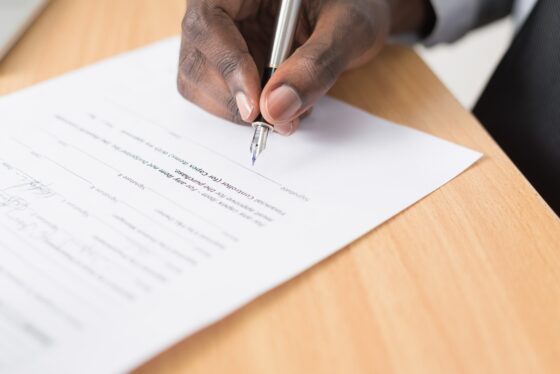Right of mortgage and mortgage deed registration
When you take out a mortgage for a new home, you give the lender the right of mortgage. That way, the bank has certainty that you will repay the loan. Your mortgage is entered into the Mortgage Register. This is called a mortgage deed registration. This registration states to whom and for what amount the right of mortgage has been granted. There is always a higher mortgage registration amount at play.

What is right of mortgage?
The hypotheekrecht is the right of mortgage. If you take out a mortgage loan, you hand over the right of mortgage on the property to the lender. This means that if, for example, you default on the interest and repayment on the property, the lender has the right to sell that property.
What is an increased mortgage registration that you enter into yourself?
The purpose of an increased mortgage deed registration is usually to save future notary fees, as you won’t have to go to the notary again to register the new amount. That’s useful if you know you’ll be carrying out renovations at a later stage.
In order to take out the additional loan, you must also set up another mortgage offer procedure with the lender. As a result, you’ll incur advisory fees and valuation costs again, as in the case of your application for your original mortgage. You will have to prove again that you have enough income, and that the value of the property is sufficient. In fact, increasing the mortgage is very similar to the financing process when buying a property.
Right of mortgage is higher than the mortgage
The mortgage deed states the maximum amount to which the lender is entitled if you are forced to sell your property. This is always a higher amount than your mortgage, as the lender always increases the mortgage deed registration directly by a certain percentage. This varies per lender, but you can assume the figure is around 40%.
To summarise: you will always have to contend with a standard increased registration by the lender; this is a standard, non-negotiable practice. In addition, you can voluntarily opt for an increase after consulting with your mortgage advisor.
An example:
In the case of a mortgage with a principal sum of € 400,000, which you register at
€ 500,000, you can take out an additional loan of up to € 100,000 with the same borrower without the need for a new mortgage deed. For example, for alterations or improvements to the home.
The registration of € 500,000 is then increased by 40% in the mortgage deed (= € 200,000) up to an amount of € 700,000.
Why the mortgage deed registration is always higher
If you are no longer fulfilling your mortgage payments, the amount of debt will increase, as the lender will incur extra costs to still allow you pay the mortgage amount due. Think of costs for fines, the interest amount, or even a bailiff. The lender is not looking to pay these costs out of their own pocket, which is why the mortgage deed registration is always higher. This is permitted up to a maximum of the stated amount as a principal sum defined within the mortgage deed.
Right of first mortgage
If you can no longer meet your payment obligations, the first right of mortgage will take effect. This means that if you are obliged to sell your house, the proceeds will first go to the lender. The first right of mortgage grants the bank priority over other parties such as the Belastingdienst (Dutch nations tax administration). This is stated in the mortgage deed and is never higher than the amount stated in the deed. In our example, that’s €700,000.
Good to know: often the lender will not let it come to this amount; they are more likely to intervene at an earlier stage, and proceed towards an enforced sale of the property.
Advice about your mortgage and mortgage deed registration
Are you looking for a mortgage that is suitable for you, and do you have any questions about the mortgage deed registration? Feel free to set up a no-obligation phone appointment with us, we’ll be happy to help you.